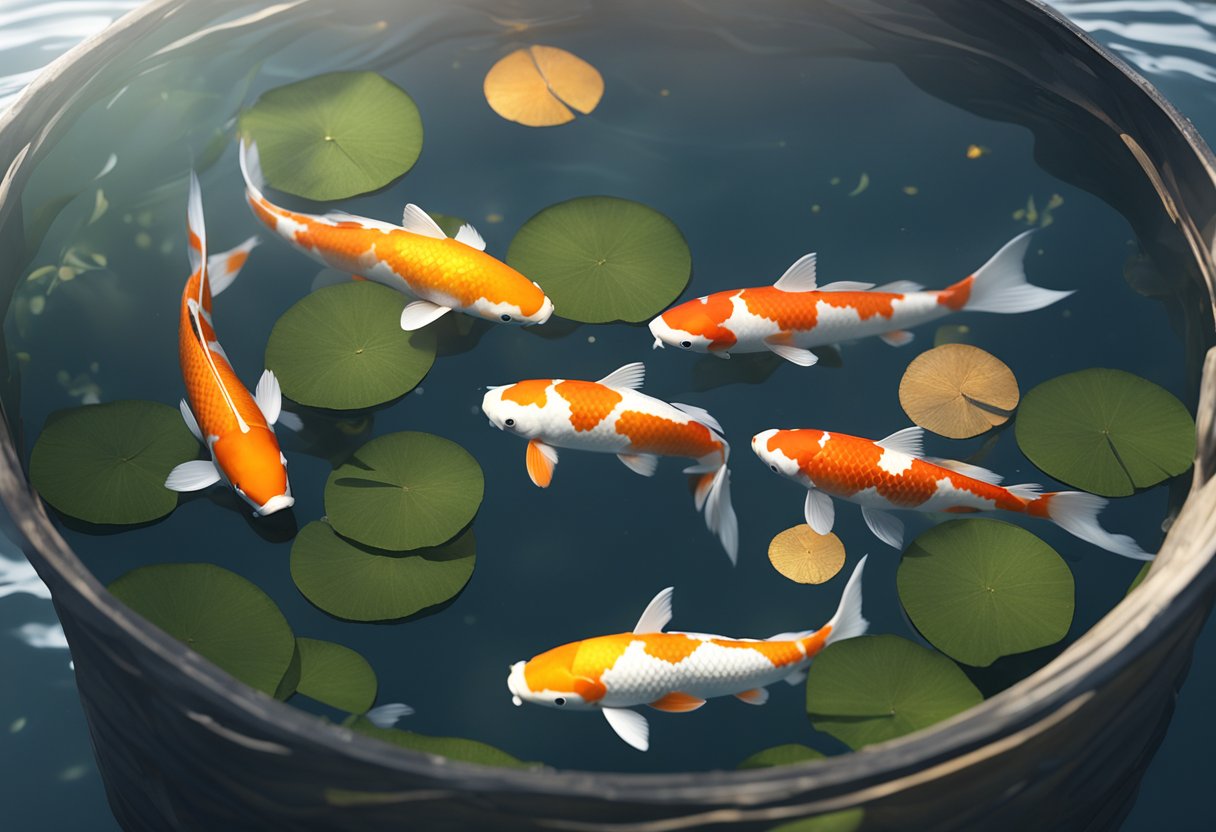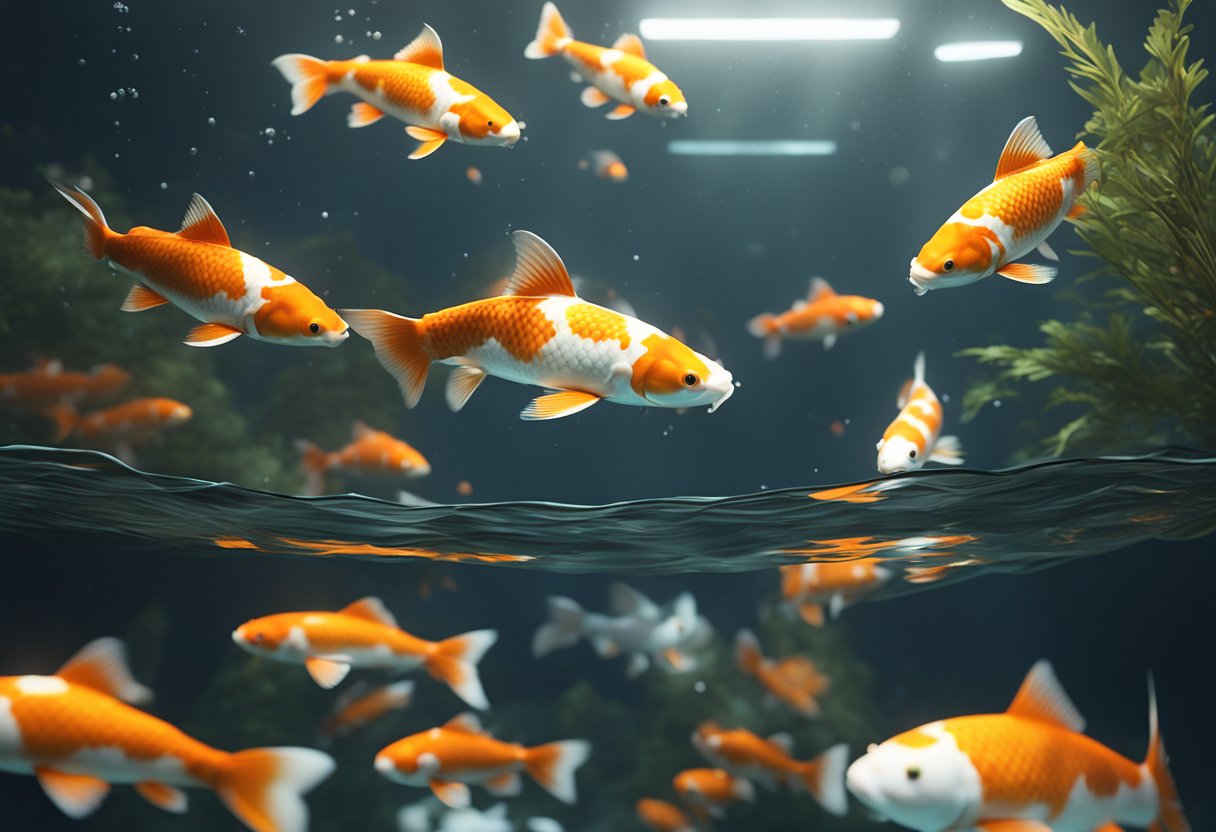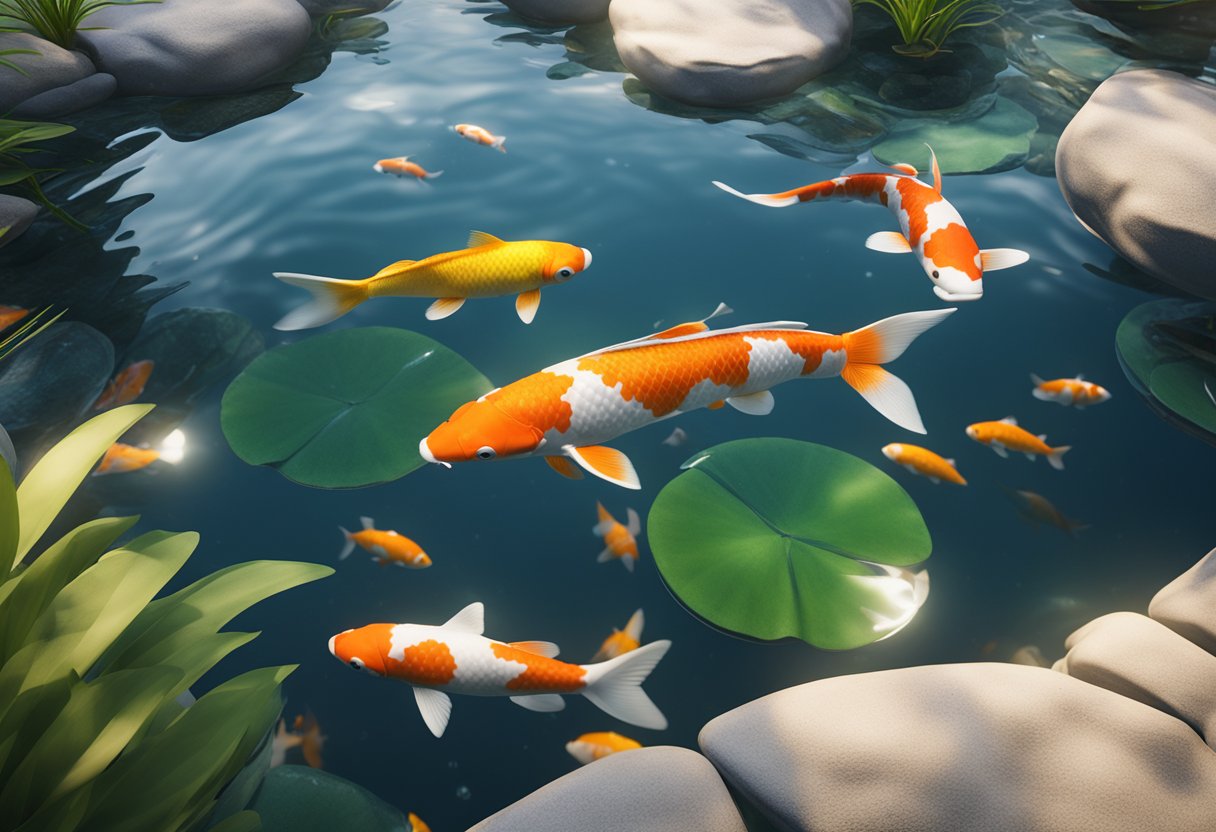Transporting koi fish can be a delicate and complex process. To ensure the safe and stress-free relocation of these cherished fish, it is essential to follow best practices for koi handling and transportation. Whether you are moving your koi fish to a new pond or preparing for a koi show, a thorough understanding of safe transportation methods is crucial.
In this article, we will explore the key considerations and expert techniques for moving koi fish safely. From understanding the specific needs of koi during transportation to securing them in the right container, we will cover all the essential steps to ensure a smooth transition for your beloved fish.
By implementing the correct handling and transportation methods, you can minimize stress and potential injuries to the koi. This will not only safeguard their well-being but also contribute to the overall success of their relocation. Whether it’s a short or long-distance journey, proper preparation and execution are key.
In addition to discussing practical tips for koi transportation, we will also explore the option of hiring professional koi relocation services. These experts possess the knowledge, experience, and specialized equipment necessary to ensure the safe transportation of your koi fish.
Join us as we delve into the world of koi handling and transportation, uncovering the best practices and techniques for moving these beautiful and delicate creatures safely. Whether you are a koi enthusiast or a professional in the industry, this article will provide valuable insights into ensuring a stress-free transition for your koi fish.
Understanding the Needs of Koi Fish during Transportation
Transportation can be a stressful experience for Koi fish, and it’s crucial to understand their specific needs during this time. Factors such as water quality, temperature fluctuations, and handling techniques can greatly impact the well-being of Koi during transportation. By providing a secure and comfortable environment, you can ensure a stress-free journey for these magnificent fish.
The Impact of Stress on Koi during Transportation
Transporting Koi fish can cause immense stress, which can weaken their immune system and lead to health issues. Factors like sudden movements, temperature changes, and excessive handling can exacerbate stress levels. It’s essential to minimize these stressors and create a calm and controlled environment throughout the transportation process.
Safe Koi Transportation Methods
Using safe and reliable transportation methods is key to ensuring the well-being of Koi fish. Properly designed transport containers that provide adequate oxygenation and water circulation are essential. These containers should also offer protection against external factors that can cause physical harm to the fish. Whether using plastic bags or specialized tanks, the primary goal is to maintain a stable and secure environment for the Koi.
Providing a Comfortable Environment
During transportation, maintaining water quality is crucial. It’s essential to provide clean, well-oxygenated water that closely matches the temperature and pH levels of the Koi’s original habitat. Additionally, minimizing jolts or sudden movements and protecting Koi from direct sunlight can help create a comfortable environment that reduces stress.
| Transportation | Advantages | Disadvantages |
|---|---|---|
| Plastic Bags | – Easy to use and widely available – Cost-effective transport option |
– Potential for punctures and leaks – Limited protection against physical harm |
| Transport Tanks | – Provides more space and freedom of movement – Better protection against physical harm |
– Bulkier and require more space – Increased cost |
Minimizing Handling and Transfers
To reduce stress, minimizing the frequency of transfers and handling is crucial. Transferring Koi from one container to another or excessive handling can cause unnecessary stress and can lead to injuries. Whenever possible, it’s best to minimize these activities and maintain a stable environment throughout the transportation process.
Overall, understanding and addressing the specific needs of Koi fish during transportation is paramount to ensure their safety and well-being. By providing a secure and comfortable environment, using appropriate transportation methods, and minimizing stressors, you can ensure a stress-free journey for these majestic fish.
Preparing for Koi Transportation
Before transporting your koi fish, it’s crucial to make the necessary preparations to ensure their safety and well-being. Here are some expert koi handling techniques and best practices for transporting koi:
- Selecting the Right Transportation Container: Choose a container that is suitable for the size and number of koi you will be transporting. Ensure that it provides enough space for the fish to swim, with secure lids or covers to prevent escapes or injuries.
- Preparing the Water: Prior to transporting your koi, it’s essential to prepare the water in the transportation container. Use the same water source and quality that the koi are accustomed to, as sudden changes in water parameters can cause stress and harm. Properly aerate the water and maintain the temperature within a suitable range for the fish.
- Ensuring Optimal Health: Before transportation, assess the health of your koi fish. Ensure they are free from diseases, parasites, or injuries that could worsen during transit. Perform regular health checks and consult a professional if needed.
By following these best practices, you can minimize stress and protect the well-being of your koi fish during transportation. Taking the time to prepare and make the necessary arrangements will greatly contribute to a smooth and successful relocation.
Safe Koi Handling Techniques
Proper koi handling techniques are crucial during transportation to minimize stress and potential injuries. By following expert koi handling techniques, you can ensure a safe and smooth relocation process for your prized fish.





